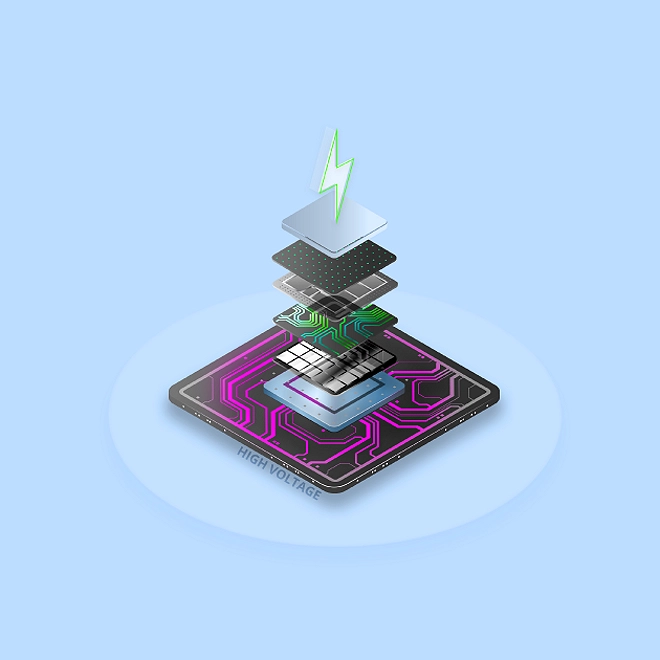Accessible is possible: Introducing the US$99 5G smartphone
5G phones under US$100 are set to bring advanced wireless to consumers worldwide, with software, ads, and content sales providing the profits.
Billions of people around the world lack access to any kind of smartphone at all, let alone one with 5G. For many, the cost has been the major barrier—until now. Deloitte Global predicts that 2023 will see the launch of the first 5G smartphones retailing at US$99 or its equivalent in other currencies. These phones will likely represent a very small share of 2023 smartphone sales, but they should eventually make 5G accessible to almost all consumers in almost all markets, accelerating 5G’s adoption around the world.
Building phones is cheaper than ever, though vendors will need revenue beyond the sale
A US$99 smartphone may seem far-fetched to consumers in developed economies who might pay upwards of US$1,000 for top-of-the-line models. But devices at this low price point already exist. In 2022, 84 million phones costing less than US$100 will have shipped, 48% to Asia (excluding China), 8% to China, 11% to Latin America, and 8% to Africa.1 All of these phones are either 3G- or 4G-capable, and Deloitte Global’s analysis of smartphone component costs shows that it’s entirely possible to build a similar 5G device.
A US$99 5G phone may be similarly sized to a US$999 model, but it would have notably different components: a low-end display, a single-lens camera, a low-power processor, and modest storage capacity. The bill of materials (BoM), shipping, and assembly for such a phone could cost as little as US$87 in 2023 (figure 1), thanks largely to the cost of 5G-capable microprocessors finally falling below US$20 per unit. Business operation costs such as sales and marketing, facilities, and energy usage could add at least another US$40 per device. That adds up to US$127… but some companies with a strong set of cellular, services, and content offerings would likely subsidize the difference to enable a 5G smartphone to sell for a sticker price of US$99 or its equivalent. Beyond 2023, further falls in component prices should make subsidies unnecessary.

Clearly, smartphone vendors can’t count on subsidized sales of ultra-cheap phones to turn a profit. Fortunately, many have created revenue streams beyond upfront phone sales throughout the past decade:
- Preinstalled apps. A smartphone vendor can charge a third-party developer to preload their applications. In the past, vendors would charge developers on a per-device basis, but performance-based payment, where dynamic preloads measure how apps are actually used once the smartphone is activated, is now more common. For the app developer, this makes preinstalls a viable alternative to online advertisements, which operate on a cost-per-install (CPI) payment model. The CPI for an Android phone, for instance, averages US$1.22, whether or not the user ever opens the app.2
- Advertisements. In developed markets, it’s common to see notifications that promote ecosystems around devices such as audio earbuds and smartwatches. Though sellers of these kinds of products would be unlikely to target buyers of a US$99 phone, other types of companies may find smartphone ads to be just the thing. Local news stories can be served up as notifications, for example, with the smartphone vendor generating money from click-throughs.
- Content. Mobile telcos with their own applications and services—which can include gaming, cloud storage, film and TV, news, health, shopping, music, finance, and more—are prime candidates for success with US$99 5G phones. Content revenues have already allowed some telcos in developing markets to provide remarkable subsidies on low-cost own-brand 4G smartphones. Add to that their revenue from compulsory data and calling plans via SIM-lock, and these telcos could find it economically sensible to subsidize their branded devices even further.
- App store control. In many countries and on many smartphones, the smartphone platform, iOS or Android, dictates the app store that customers use. But in China, many smartphone vendors successfully operate their own app stores, generating revenue from app sales and in-app purchases. This revenue allows them to offer subsidies to sell the devices themselves for up to 40% less than the same device would cost elsewhere in the world.3
The potential market, in terms of numbers, is huge. The first company to launch a US$99 5G device, be it a smartphone vendor or mobile telco, will gain prestige and a reputation for equity in bringing next-generation technology to the less wealthy. These phones are likely to launch in China first, taking advantage of the country’s near-ubiquitous 5G coverage in metropolitan areas. They will most likely be designed and shipped by a smartphone vendor utilizing its own app store and services to sell the hardware at a loss.
Emerging markets such as sub-Saharan Africa and Southeast Asia will follow close on China’s heels. In developing regions such as Africa without a significant 5G presence, many telcos aim to deploy a mass of 5G smartphones first before building out their network infrastructures. By future-proofing the phones that their customers use, these telcos could make their 5G networks more profitable on day one. The lack of cheap 5G smartphones with which to pursue this strategy has been a major reason why telcos in these areas have held back from deploying 5G networks.4 But with US$99 5G phones just around the corner, the business case for telcos could be transformational—mainly because carrying a gigabyte of data is cheaper via 5G network technology than 4G.
The bottom line
The first step is clear: Get 5G phones into customers’ hands. But US$99 is still expensive for many people. And beyond the device, people also need to fund regular payments for mobile data and services. Hence, improving access to credit will likely be a crucial prerequisite for the US$99 smartphone market.
This will be a challenge. Twenty-nine percent of people in developing regions are unbanked and so lack a formal credit history5; for lenders, issuing credit to this group is high-risk and carries heavy premiums. However, solutions are emerging to reduce lenders’ risk exposure. A provider could, for example, send push notifications and remotely lock devices if a customer does not pay their bill. In regions such as Latin America, remote locking has led delinquency rates to drop from 35% to 11%6—and if their device is locked, 83% of customers then pay the bill within 15 days, as opposed to several months. In developing markets, many telcos already offer mobile payment and banking solutions, and are well placed to be involved with creating financing.
Telcos have several factors to balance when crafting their long-term 5G strategies. First, they would incur the cost of network deployment, a significant capex outlay. Then, as they take advantage of the greater efficiency per gigabyte of 5G over 4G, they could potentially realize savings. And throughout, they could face uncertainty as they predict how quickly tariff prices will inevitably fall. To develop a winning strategy, therefore, telcos could do well to model profitability over 5G’s generational lifecycle. On the demand side, they will also likely need to quantify how many net new customers a US$99 5G phone could attract, as well as how much more data their existing customers could consume.
Perhaps most importantly for telcos, a low-cost 5G smartphone gives them a platform to explore new business models. For example, these devices could become ad-hoc fixed wireless access devices for households with poor fixed-line internet, delivering high-speed broadband for other devices anywhere within network coverage.
It’s not just telcos in emerging markets that could benefit from cheap 5G phones. Many manufacturers in developed economies, for example, are eager to experiment with private 5G networks, but many pilots are waiting on the availability of competitively priced 5G modems. A 5G smartphone is not sufficient to drive elements of a smart factory, but it could certainly be used in proofs of concept ahead of large-scale deployments.
Of course, a US$99 5G phone won’t have the features and horsepower of a US$1,000 model. From a certain point of view, this raises questions about the purpose of 5G. If 5G is about watching high-quality video, for example, then a cheap 5G phone is pointless—its low-res screen would be unable to display 4K HDR content with a high refresh rate, and users who download the file for an uninterrupted experience may find that the device’s limited storage space quickly runs low. But 5G is not just about these showpiece applications. In the long term, it’s about unlocking value by providing world-class connectivity to millions who might not currently have it, for work, education, or recreation. At US$99, that’s a bargain.
Telecommunications, Media & Entertainment
Deloitte’s Global Telecommunications, Media & Entertainment practice focuses on helping companies thrive in the sector’s continually evolving business landscape. Our breadth of knowledge can help organizations uncover opportunities and understand trends that can spark new growth.
Learn More


